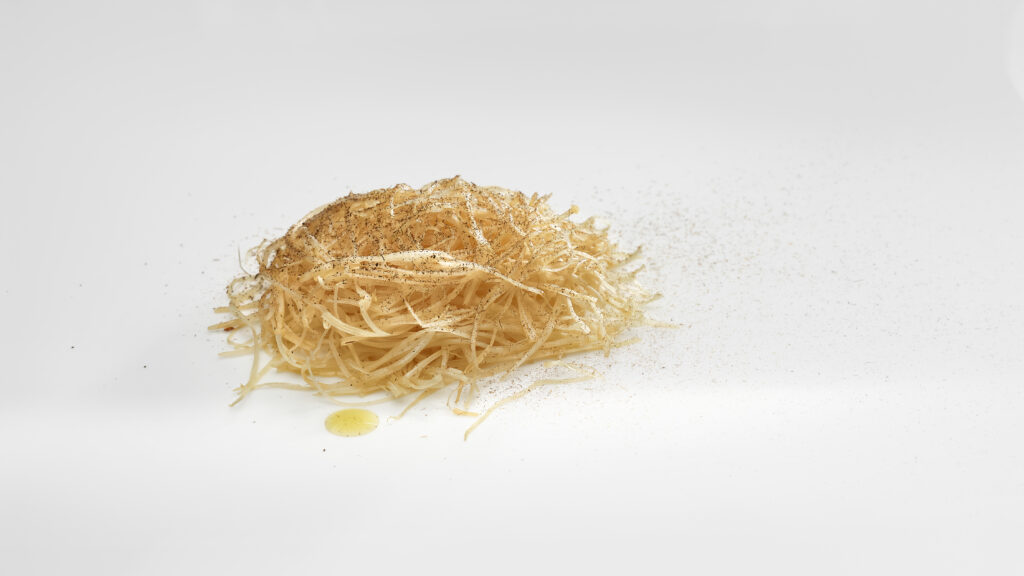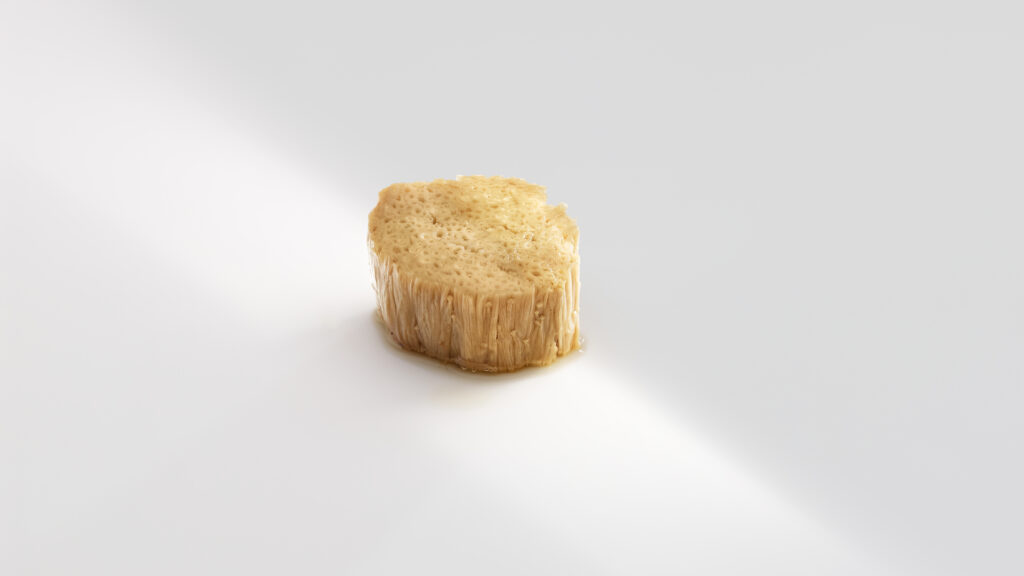Our fixations: texture and temperature
At Mugaritz, taste lies primarily in texture and temperature as attributes. Although they often go unnoticed (especially considering the limited space for dissent in dictatorships of deliciousness), they foster sensory awareness. Their close relationship makes it easy for us to propose exercises like trying the same ingredient at varying levels of heat or with different textures. Rejecting cutlery as a general rule likewise helps us to delve deeper into this matter.
Touching firstly with our hands rather than with our mouths not only provides valuable information to our sensory receptors, it also fuels desire and reflection. Discovering the unnoticed weight of a particular object with our palms, feeling warmth where we thought there would be cold, having ingredients intertwined amongst our fingers, nuzzling something steaming with our nose, and using an unexpected part of our body to break the ice opens up a host of possibilities for interaction.
In 2025, we are offering a unique landscape of textures and temperatures, specifically making a sensory appeal to stalks and stems by exploring ingredients like the pumpkin, sea rush, amaranth, and enoki.

Also known as the “gold needle mushroom”, the Flammulina velutipes species is commonly called enoki and is typically elongated, thin, and white in appearance. It is often found in Asian cuisine (in soups, stir-fries, and a number of steamed dishes). In its natural environment, it grows with a brown top and a shorter stem. Nevertheless, if grown in dark, high-humidity environments —as is the case when propagated for commercial use— it develops its characteristic shape and white colour.

The texture of fresh enoki is succulently crunchy. Seeking to take advantage of that attribute in particular, we freeze the stems and sprinkle them with hay. We invite diners to unravel an entire landscape with their hands, a type of nest rescued from the elements. By changing the context and temperature, however, enoki stems offer up a different side of themselves. We include them, then, in another dish; but, this time, steamed and seasoned with meat, after having compacted them into a sort of “carpet” full of flavour and —once again— texture. Ultimately, our menu seeks to have meaning beyond flavour, with us understanding that subjectivity treads on shaky ground when someone asks if this is delicious or if that is any good.